Mining cryptocurrency at home can be a rewarding venture, but high electricity costs often eat into profits. This comprehensive guide will show you how to set up an energy-efficient mining operation that maximizes your earnings while keeping power consumption in check. From selecting the right hardware to choosing energy-efficient coins and implementing cost-saving strategies, you’ll learn everything needed to mine cryptocurrency at home profitably with low electricity costs.
Understanding Cryptocurrency Mining and Electricity Costs
Cryptocurrency mining is the process of validating transactions on a blockchain network and earning rewards in the form of new coins. The challenge for home miners is balancing the computing power needed with the electricity consumed. With energy costs accounting for 60-80% of mining expenses, finding ways to reduce electricity usage is crucial for profitability.
The Mining Profitability Equation
Before diving into mining, it’s essential to understand the basic profitability equation:
Mining Profit = Mining Revenue – Electricity Costs – Hardware Costs
Where mining revenue depends on the coin’s market price, mining difficulty, and your hardware’s hash rate. To mine cryptocurrency at home profitably with low electricity costs, you need to optimize each component of this equation.
Calculate Your Mining Profitability
Use WhatToMine’s calculator to estimate potential earnings based on your hardware and local electricity rates.
Selecting Energy-Efficient Mining Hardware
The hardware you choose significantly impacts both your mining capability and electricity consumption. For home miners concerned about energy costs, efficiency should be prioritized over raw power.
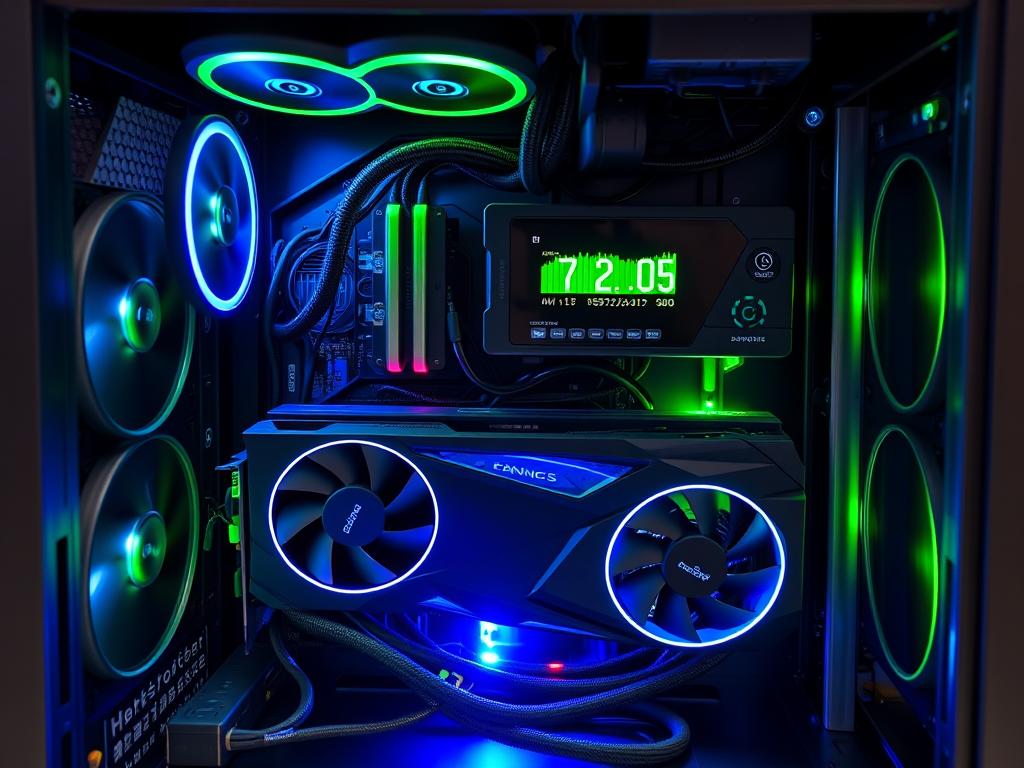
ASIC Miners vs. GPUs: Energy Efficiency Comparison
ASIC Miners
Application-Specific Integrated Circuits (ASICs) are designed for mining specific cryptocurrencies like Bitcoin. They offer high hash rates but consume significant power.
GPU Mining
Graphics Processing Units (GPUs) are more versatile and can mine various cryptocurrencies. Modern GPUs offer a good balance between hash rate and power consumption.
Most Energy-Efficient Mining Hardware in 2025
| Hardware Type | Model | Hash Rate | Power Consumption | Efficiency (J/TH or J/MH) | Price Range |
| ASIC | Antminer S21 Pro | 234 TH/s | 3220W | 13.8 J/TH | $3,000-$4,000 |
| ASIC | Whatsminer M50S | 126 TH/s | 3276W | 26 J/TH | $2,000-$2,500 |
| GPU | NVIDIA RTX 4070 | 60 MH/s (ETH) | 120W | 2.0 J/MH | $500-$600 |
| GPU | AMD Radeon RX 7900 XT | 110 MH/s (ETH) | 220W | 2.0 J/MH | $800-$900 |
Pro Tip: When selecting hardware, prioritize efficiency (J/TH or J/MH) over raw hash rate. More efficient hardware will consume less electricity per unit of mining power, helping you mine cryptocurrency at home profitably with low electricity costs.
Best Cryptocurrencies to Mine with Low Electricity Costs
Not all cryptocurrencies are created equal when it comes to energy consumption. Some coins use mining algorithms specifically designed to be energy-efficient and ASIC-resistant, making them ideal for home miners concerned about electricity costs.

Top Energy-Efficient Coins for Home Mining in 2025

Monero (XMR)
Monero uses the RandomX algorithm, which is optimized for CPU mining and designed to be ASIC-resistant. This makes it one of the most accessible coins for home miners with standard computers.
- Algorithm: RandomX (CPU-friendly)
- Power Requirement: Low (CPU mining)
- Hardware: Standard computer CPU
- Privacy-focused with strong community support
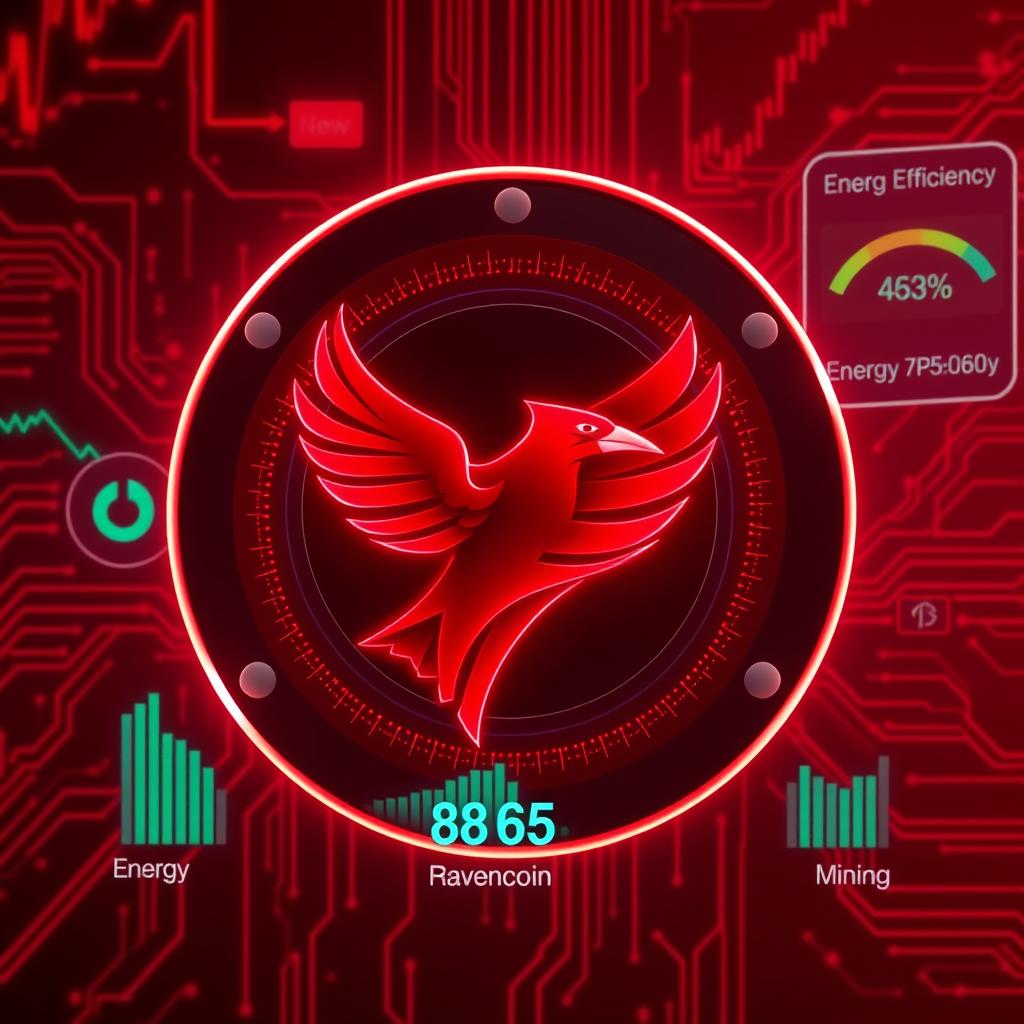
Ravencoin (RVN)
Ravencoin uses the KAWPOW algorithm, which is designed to be ASIC-resistant and can be efficiently mined with GPUs. It’s a popular choice for home miners looking to maximize GPU efficiency.
- Algorithm: KAWPOW (GPU-friendly)
- Power Requirement: Moderate (GPU mining)
- Hardware: Mid-range GPU
- Asset-focused blockchain with active development
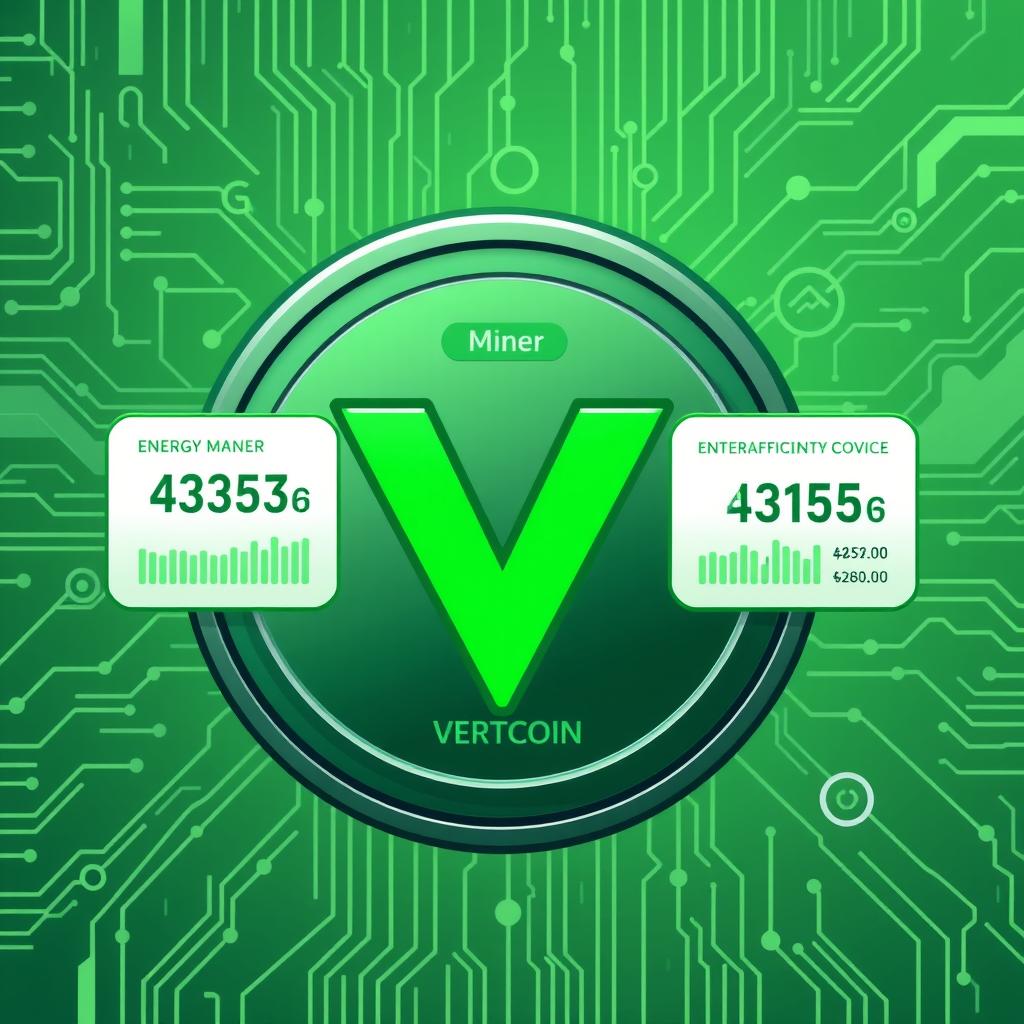
Vertcoin (VTC)
Vertcoin is committed to remaining ASIC-resistant and offers a user-friendly One-Click Miner. It’s designed to be mined efficiently on consumer-grade hardware with low electricity consumption.
- Algorithm: Lyra2REv3 (GPU-friendly)
- Power Requirement: Low-Moderate (GPU mining)
- Hardware: Consumer GPUs
- Simple setup with One-Click Miner software
Comparing Mining Efficiency Across Cryptocurrencies
| Cryptocurrency | Algorithm | Hardware | Energy Efficiency | Block Reward | Mining Difficulty |
| Monero (XMR) | RandomX | CPU | High | 0.6 XMR | Low-Medium |
| Ravencoin (RVN) | KAWPOW | GPU | Medium | 2,500 RVN | Medium |
| Vertcoin (VTC) | Lyra2REv3 | GPU | Medium-High | 12.5 VTC | Low |
| Ethereum Classic (ETC) | Etchash | GPU | Medium | 2.048 ETC | Medium-High |
| Grin (GRIN) | Cuckaroo29 | GPU | Medium | 60 GRIN | Low-Medium |
Strategies to Reduce Electricity Costs While Mining
To mine cryptocurrency at home profitably with low electricity costs, you need to implement strategic approaches to energy management. Here are proven methods to reduce your power consumption while maintaining mining performance.
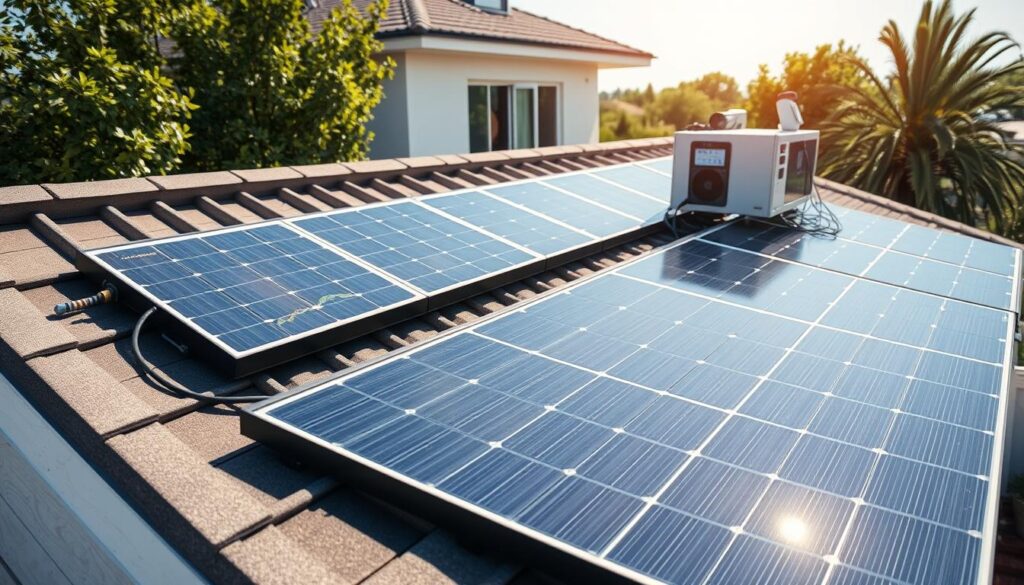
Utilize Renewable Energy Sources
Renewable energy can dramatically reduce or even eliminate your electricity costs for mining operations.
Solar Power for Mining
Solar panels can provide free electricity during daylight hours, significantly reducing your mining costs. While the initial investment is substantial ($5,000-$20,000 depending on system size), the long-term savings can make mining highly profitable.
Wind and Hydroelectric Options
Depending on your location, small-scale wind turbines or micro-hydroelectric systems can provide consistent power for mining operations. These options work well in areas with reliable wind patterns or access to flowing water.
Calculate Your Solar Mining ROI
Use this calculator to determine how quickly a solar installation could pay for itself through mining operations.
Optimize Mining During Off-Peak Hours
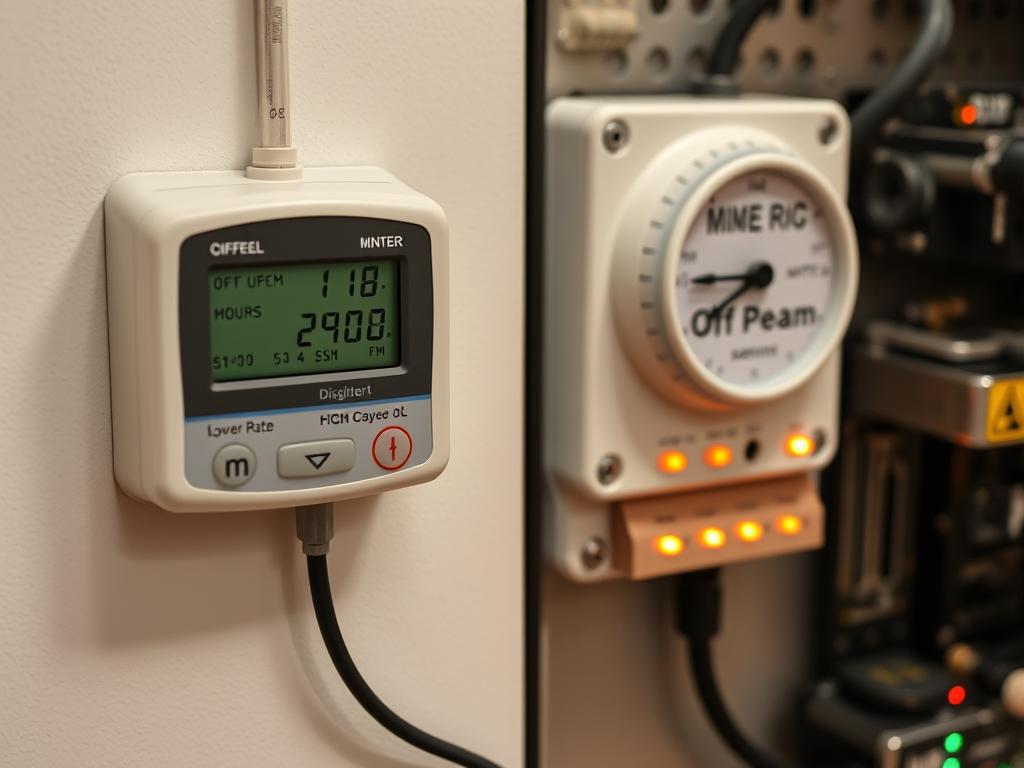
Many utility companies offer lower electricity rates during off-peak hours (typically nights and weekends). By scheduling your mining operations during these times, you can significantly reduce your electricity costs.
Optimize Hardware Power Settings
Fine-tuning your mining hardware can significantly reduce power consumption while maintaining most of your hash rate.
GPU Undervolting and Underclocking
Most GPUs can be optimized to use less power while maintaining 90-95% of their mining performance. This is done through undervolting (reducing the voltage) and sometimes underclocking (reducing the core clock speed).
ASIC Power Optimization
Modern ASIC miners often include power-saving modes or can be configured to run at lower power settings for improved efficiency.
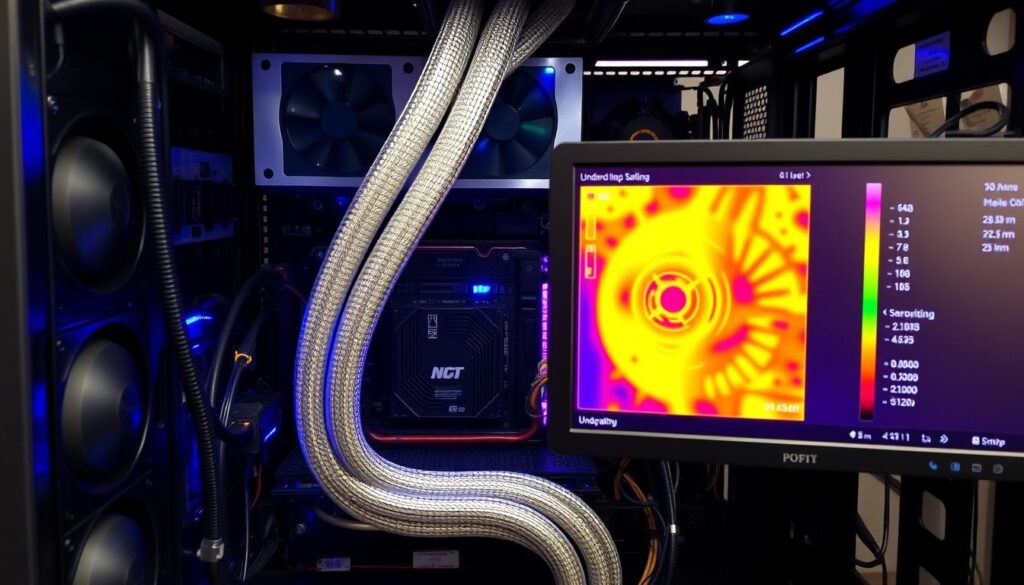
Cooling and Thermal Management
Efficient cooling not only extends the life of your mining equipment but also reduces electricity consumption. Overheated components draw more power and perform less efficiently.
Important: Always monitor your hardware temperatures. Overheating can damage equipment and actually increase power consumption as fans work harder to compensate.
Software Setup for Efficient Mining
The right software configuration is crucial for maximizing efficiency when you mine cryptocurrency at home profitably with low electricity costs. Proper setup can optimize performance while minimizing power consumption.
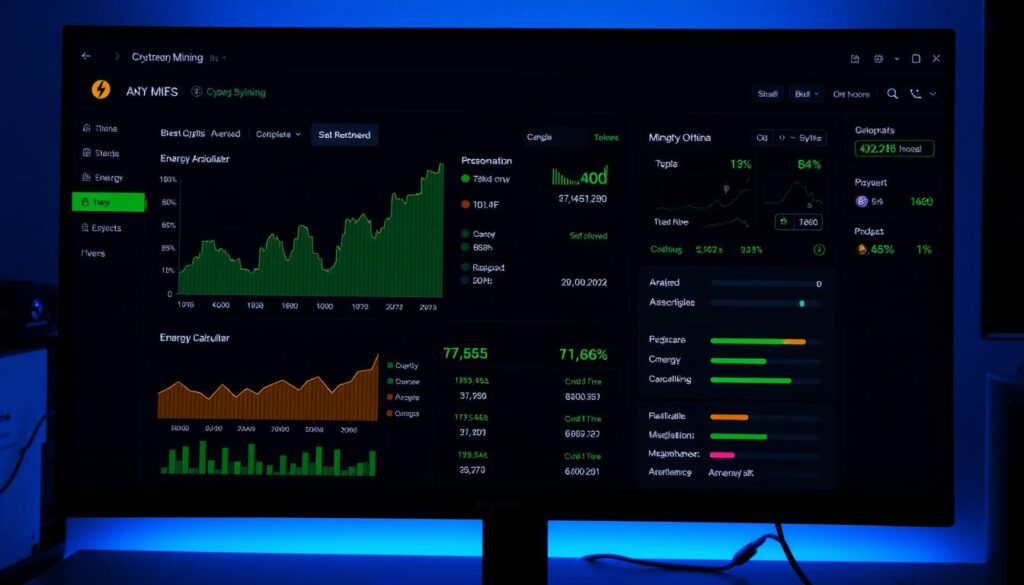
Essential Mining Software for Energy Efficiency
NiceHash
A beginner-friendly mining platform that automatically switches to the most profitable algorithm based on your hardware. Includes power management features to optimize electricity usage.
- Auto-switching to most profitable coins
- Built-in power management
- User-friendly interface
- Supports both CPU and GPU mining
HiveOS
A comprehensive mining operating system with advanced power management features. Allows for detailed control over hardware settings to maximize energy efficiency.
- Advanced undervolting capabilities
- Remote management of mining rigs
- Scheduled mining operations
- Detailed power consumption monitoring
Awesome Miner
A powerful mining management software that includes profit switching and power management features. Ideal for miners with multiple rigs who want to optimize for electricity costs.
- Profit switching based on electricity costs
- Power usage monitoring
- Manages multiple mining engines
- Detailed profitability reporting
Mining Pools for Energy-Efficient Mining
Joining a mining pool can help ensure more consistent rewards, which is important when optimizing for electricity costs. Some pools also offer features specifically designed for energy-efficient mining.
| Mining Pool | Supported Coins | Fee Structure | Energy Efficiency Features | Payout Threshold |
| Ethermine | ETC, RVN, BEAM | 1% | MEV rewards, efficient server locations | 0.01 ETH |
| F2Pool | BTC, ETC, RVN, XMR, many others | 2-4% | Merged mining options | Varies by coin |
| Nanopool | ETC, XMR, RVN, CFX | 1-2% | Low stale share rate | 0.1 ETC, 0.3 XMR |
| 2Miners | ETC, RVN, GRIN, many others | 1% | SOLO/PROP options, PPLNS | 0.1 ETC, 10 RVN |
Tip: When choosing a mining pool, consider server locations. Mining on pools with servers geographically closer to you can reduce network latency and slightly improve energy efficiency.
Calculating Mining Profitability with Electricity Costs
Understanding the relationship between mining rewards and electricity costs is essential to ensure you mine cryptocurrency at home profitably with low electricity costs. Here’s how to calculate your true mining profitability.
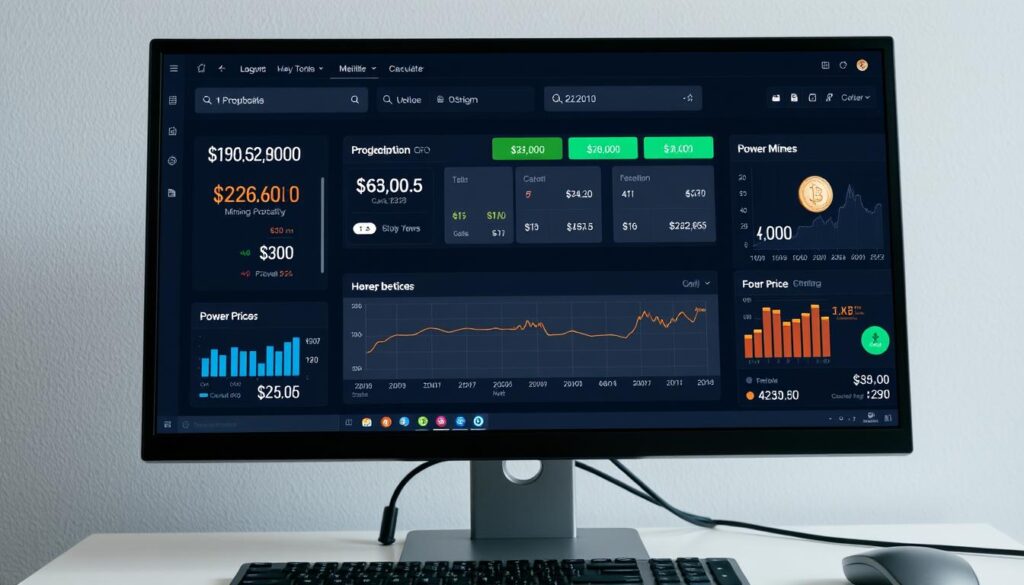
Step-by-Step Profitability Calculation
Sample Profitability Analysis
| Mining Setup | Daily Revenue | Power Usage | Electricity Cost ($0.10/kWh) | Daily Profit | Monthly Profit | Break-even Period |
| 6x RTX 3060 Ti (360 MH/s ETH) | $9.00 | 900W (21.6 kWh/day) | $2.16 | $6.84 | $205.20 | ~7 months |
| Antminer S19 Pro (110 TH/s BTC) | $14.50 | 3250W (78 kWh/day) | $7.80 | $6.70 | $201.00 | ~12 months |
| 4x CPU Ryzen 9 5950X (Monero) | $3.20 | 600W (14.4 kWh/day) | $1.44 | $1.76 | $52.80 | ~18 months |
Calculate Your Specific Mining Profitability
Use CryptoCompare’s advanced calculator to get personalized profitability estimates based on your hardware and local electricity rates.
Profitability Thresholds Based on Electricity Costs
Understanding your break-even electricity rate is crucial for maintaining profitability. Here’s a guide to help you determine if mining is viable based on your local electricity costs:
Legal and Environmental Considerations
Before setting up your mining operation, it’s important to understand the legal and environmental implications of mining cryptocurrency at home.
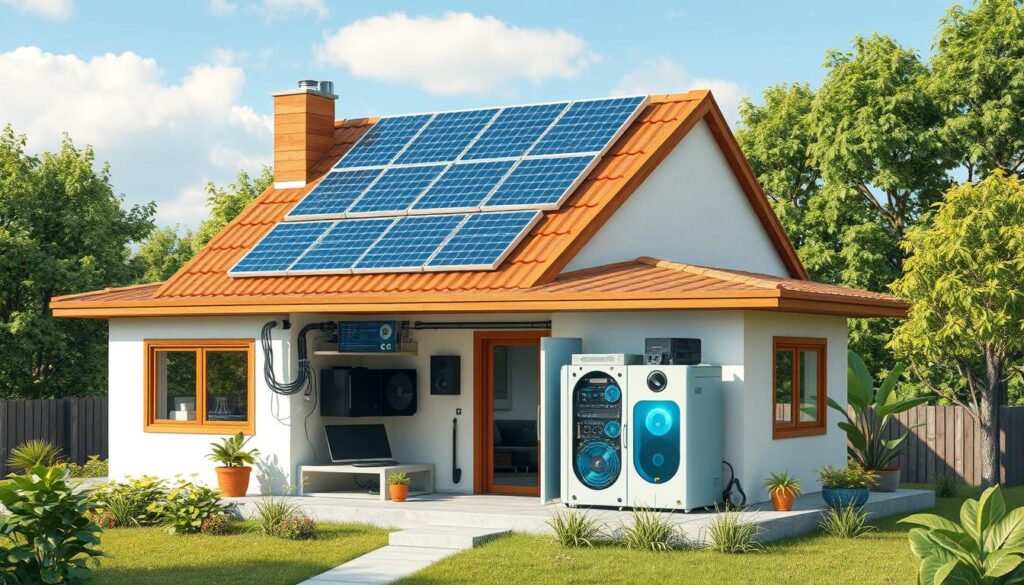
Legal Considerations for Home Mining
Residential Zoning and Regulations
Some localities have restrictions on running businesses from home, especially those that consume significant electricity or generate noise.
Tax Implications
Mining cryptocurrency creates tax obligations in most countries. You’ll need to report mining income and may be able to deduct certain expenses.
Environmental Impact and Sustainability
Mining cryptocurrency can have a significant environmental footprint, but there are ways to minimize your impact while maintaining profitability.
Sustainable Mining Practices
- Use renewable energy sources like solar or wind
- Implement heat recovery systems to repurpose mining heat
- Choose energy-efficient hardware with better hash-to-watt ratios
- Mine during off-peak hours to reduce strain on the grid
- Consider carbon offset programs to neutralize your impact
Practices to Avoid
- Running inefficient, outdated hardware
- Mining in areas with coal-heavy electricity generation
- Ignoring heat management (wastes energy and shortens hardware life)
- Operating at maximum power without optimization
- Disregarding local environmental regulations
Carbon Footprint Reduction: By using renewable energy and efficient hardware, you can reduce the carbon footprint of your mining operation by up to 90% compared to grid electricity in coal-heavy regions.
Getting Started: Your First Energy-Efficient Mining Setup
Ready to mine cryptocurrency at home profitably with low electricity costs? Here’s a step-by-step guide to setting up your first energy-efficient mining operation.
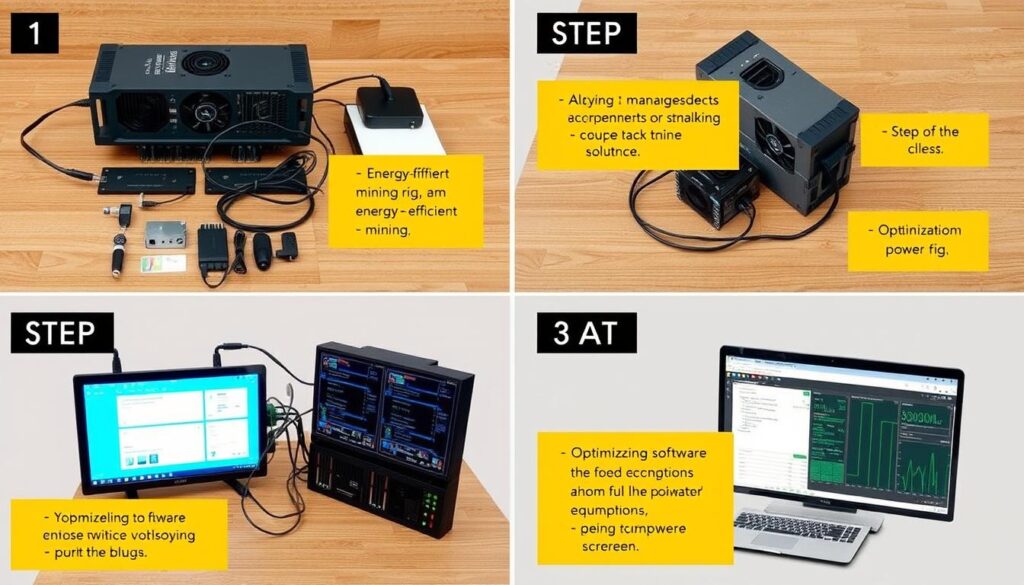
Beginner-Friendly Mining Setup
Recommended Starter Setup for Energy-Efficient Mining
Budget-Friendly Energy-Efficient Mining Rig
This setup balances initial cost with energy efficiency for beginners looking to mine cryptocurrency at home profitably with low electricity costs.
| Component | Recommendation | Approximate Cost | Power Usage | Notes |
| GPU | NVIDIA RTX 3060 Ti | $400-$500 | 120-150W (optimized) | Excellent efficiency for Ethereum Classic, Ravencoin |
| CPU | AMD Ryzen 5 3600 | $150-$200 | 65W | Good for Monero mining alongside GPU mining |
| Motherboard | B450 with PCIe slots | $80-$120 | 30-40W | Allows for future expansion |
| RAM | 16GB DDR4 | $50-$70 | 5-10W | Sufficient for most mining operations |
| Power Supply | Gold-rated 650W | $80-$100 | N/A | Higher efficiency rating reduces power waste |
| Storage | 120GB SSD | $20-$30 | 2-5W | Just enough for the operating system and mining software |
| Cooling | 120mm case fans (2-3) | $20-$30 | 5-10W | Essential for maintaining optimal temperatures |
| Power Monitoring | Kill-A-Watt meter | $20-$25 | N/A | For accurate electricity usage tracking |
Total Estimated Cost: $820-$1,075
Total Power Consumption: 250-290W (optimized)
Estimated Daily Profit: $1.50-$3.00 (at $0.10/kWh electricity cost)
Payback Period: 9-24 months (depending on cryptocurrency prices)
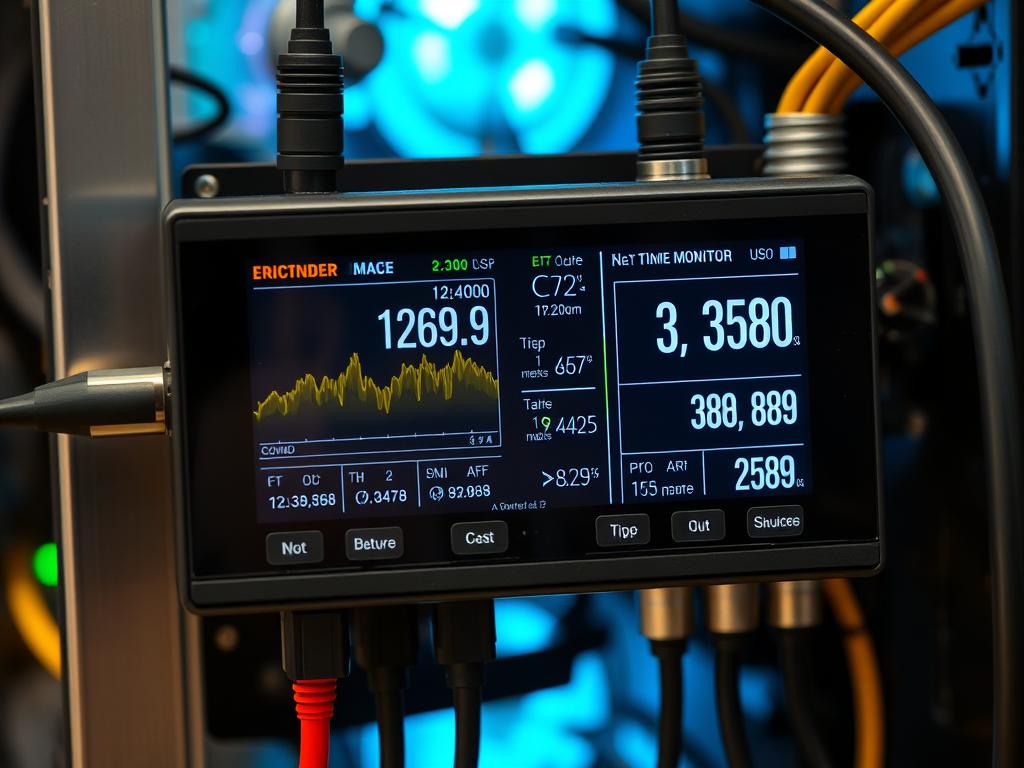
Scaling Your Operation While Maintaining Efficiency
Once you’ve mastered the basics and confirmed profitability with your initial setup, you can gradually scale your operation while maintaining energy efficiency.
Start Your Mining Journey Today
Download our free guide with detailed power optimization settings for the most popular GPUs and mining software.
Conclusion: Sustainable and Profitable Home Mining
Mining cryptocurrency at home profitably with low electricity costs is achievable with the right approach. By selecting energy-efficient hardware, optimizing power settings, utilizing renewable energy when possible, and choosing the right coins to mine, you can build a sustainable mining operation that generates consistent profits.
Remember that cryptocurrency mining is a dynamic field that requires ongoing adjustments as market conditions, mining difficulty, and electricity costs change. Start small, monitor your results carefully, and scale gradually as you confirm profitability. With patience and attention to energy efficiency, home mining can be both environmentally responsible and financially rewarding.
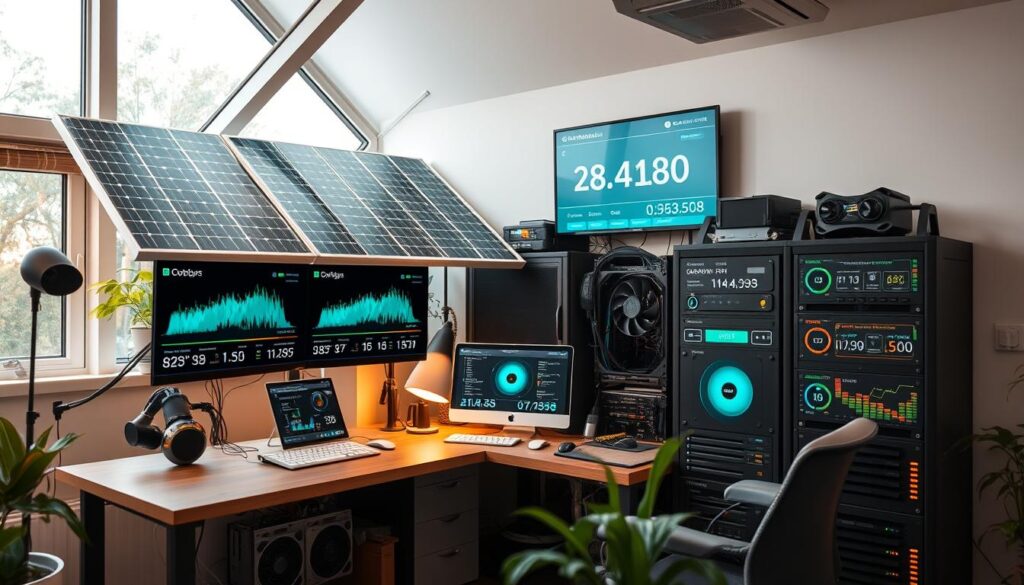
Ready to Optimize Your Mining Operation?
Use our interactive calculator to find the perfect balance between mining hardware and electricity costs for maximum profitability.
Frequently Asked Questions
What is the most profitable cryptocurrency to mine at home with low electricity costs?
The most profitable cryptocurrency to mine changes based on market conditions, mining difficulty, and your specific hardware. For home miners with standard computer hardware, coins like Monero (XMR), Ravencoin (RVN), and Vertcoin (VTC) are often good choices due to their ASIC-resistant algorithms. Use a mining calculator like WhatToMine to compare profitability based on your specific hardware and electricity costs.
How much electricity does cryptocurrency mining use?
Electricity usage varies significantly based on your hardware. A single modern GPU might use 100-300 watts, while an ASIC miner can consume 1,000-3,500 watts. A small home mining rig with 6 GPUs typically uses 800-1,500 watts, which translates to 19-36 kWh per day or roughly 570-1,080 kWh per month. This is equivalent to running 1-2 additional refrigerators in your home.
Is solar power worth it for cryptocurrency mining?
Solar power can be worth it for cryptocurrency mining, especially in sunny regions with high electricity costs. While the initial investment is substantial (,000-,000 depending on system size), solar can significantly reduce or eliminate your mining electricity costs over time. For a medium-sized mining operation consuming 1,500 watts continuously, a 5kW solar system could cover most of your daytime mining electricity needs. The payback period is typically 3-7 years, after which your mining electricity is essentially free.
How can I reduce the electricity consumption of my mining rig?
You can reduce electricity consumption by:
- Undervolting GPUs using software like MSI Afterburner
- Optimizing clock speeds (often lowering core clock while maintaining memory clock)
- Using efficient power supplies (80+ Gold or better)
- Mining during off-peak hours if you have time-of-use electricity rates
- Ensuring proper cooling to prevent thermal throttling
- Choosing more energy-efficient algorithms and coins to mine
What’s the minimum investment needed to start mining profitably at home?
You can start mining with minimal investment if you already have a computer with a decent GPU. For a dedicated mining setup, expect to invest at least 0-
Frequently Asked Questions
What is the most profitable cryptocurrency to mine at home with low electricity costs?
The most profitable cryptocurrency to mine changes based on market conditions, mining difficulty, and your specific hardware. For home miners with standard computer hardware, coins like Monero (XMR), Ravencoin (RVN), and Vertcoin (VTC) are often good choices due to their ASIC-resistant algorithms. Use a mining calculator like WhatToMine to compare profitability based on your specific hardware and electricity costs.
How much electricity does cryptocurrency mining use?
Electricity usage varies significantly based on your hardware. A single modern GPU might use 100-300 watts, while an ASIC miner can consume 1,000-3,500 watts. A small home mining rig with 6 GPUs typically uses 800-1,500 watts, which translates to 19-36 kWh per day or roughly 570-1,080 kWh per month. This is equivalent to running 1-2 additional refrigerators in your home.
Is solar power worth it for cryptocurrency mining?
Solar power can be worth it for cryptocurrency mining, especially in sunny regions with high electricity costs. While the initial investment is substantial ($5,000-$20,000 depending on system size), solar can significantly reduce or eliminate your mining electricity costs over time. For a medium-sized mining operation consuming 1,500 watts continuously, a 5kW solar system could cover most of your daytime mining electricity needs. The payback period is typically 3-7 years, after which your mining electricity is essentially free.
How can I reduce the electricity consumption of my mining rig?
You can reduce electricity consumption by:
- Undervolting GPUs using software like MSI Afterburner
- Optimizing clock speeds (often lowering core clock while maintaining memory clock)
- Using efficient power supplies (80+ Gold or better)
- Mining during off-peak hours if you have time-of-use electricity rates
- Ensuring proper cooling to prevent thermal throttling
- Choosing more energy-efficient algorithms and coins to mine
What’s the minimum investment needed to start mining profitably at home?
You can start mining with minimal investment if you already have a computer with a decent GPU. For a dedicated mining setup, expect to invest at least $800-$1,500 for a basic rig with one or two GPUs. Profitability depends on your electricity costs, but with rates below $0.10/kWh and efficient hardware, you could see a return on investment within 12-24 months. Start small and reinvest profits to expand gradually rather than making a large initial investment.
,500 for a basic rig with one or two GPUs. Profitability depends on your electricity costs, but with rates below
Frequently Asked Questions
What is the most profitable cryptocurrency to mine at home with low electricity costs?
The most profitable cryptocurrency to mine changes based on market conditions, mining difficulty, and your specific hardware. For home miners with standard computer hardware, coins like Monero (XMR), Ravencoin (RVN), and Vertcoin (VTC) are often good choices due to their ASIC-resistant algorithms. Use a mining calculator like WhatToMine to compare profitability based on your specific hardware and electricity costs.
How much electricity does cryptocurrency mining use?
Electricity usage varies significantly based on your hardware. A single modern GPU might use 100-300 watts, while an ASIC miner can consume 1,000-3,500 watts. A small home mining rig with 6 GPUs typically uses 800-1,500 watts, which translates to 19-36 kWh per day or roughly 570-1,080 kWh per month. This is equivalent to running 1-2 additional refrigerators in your home.
Is solar power worth it for cryptocurrency mining?
Solar power can be worth it for cryptocurrency mining, especially in sunny regions with high electricity costs. While the initial investment is substantial ($5,000-$20,000 depending on system size), solar can significantly reduce or eliminate your mining electricity costs over time. For a medium-sized mining operation consuming 1,500 watts continuously, a 5kW solar system could cover most of your daytime mining electricity needs. The payback period is typically 3-7 years, after which your mining electricity is essentially free.
How can I reduce the electricity consumption of my mining rig?
You can reduce electricity consumption by:
- Undervolting GPUs using software like MSI Afterburner
- Optimizing clock speeds (often lowering core clock while maintaining memory clock)
- Using efficient power supplies (80+ Gold or better)
- Mining during off-peak hours if you have time-of-use electricity rates
- Ensuring proper cooling to prevent thermal throttling
- Choosing more energy-efficient algorithms and coins to mine
What’s the minimum investment needed to start mining profitably at home?
You can start mining with minimal investment if you already have a computer with a decent GPU. For a dedicated mining setup, expect to invest at least $800-$1,500 for a basic rig with one or two GPUs. Profitability depends on your electricity costs, but with rates below $0.10/kWh and efficient hardware, you could see a return on investment within 12-24 months. Start small and reinvest profits to expand gradually rather than making a large initial investment.
.10/kWh and efficient hardware, you could see a return on investment within 12-24 months. Start small and reinvest profits to expand gradually rather than making a large initial investment.

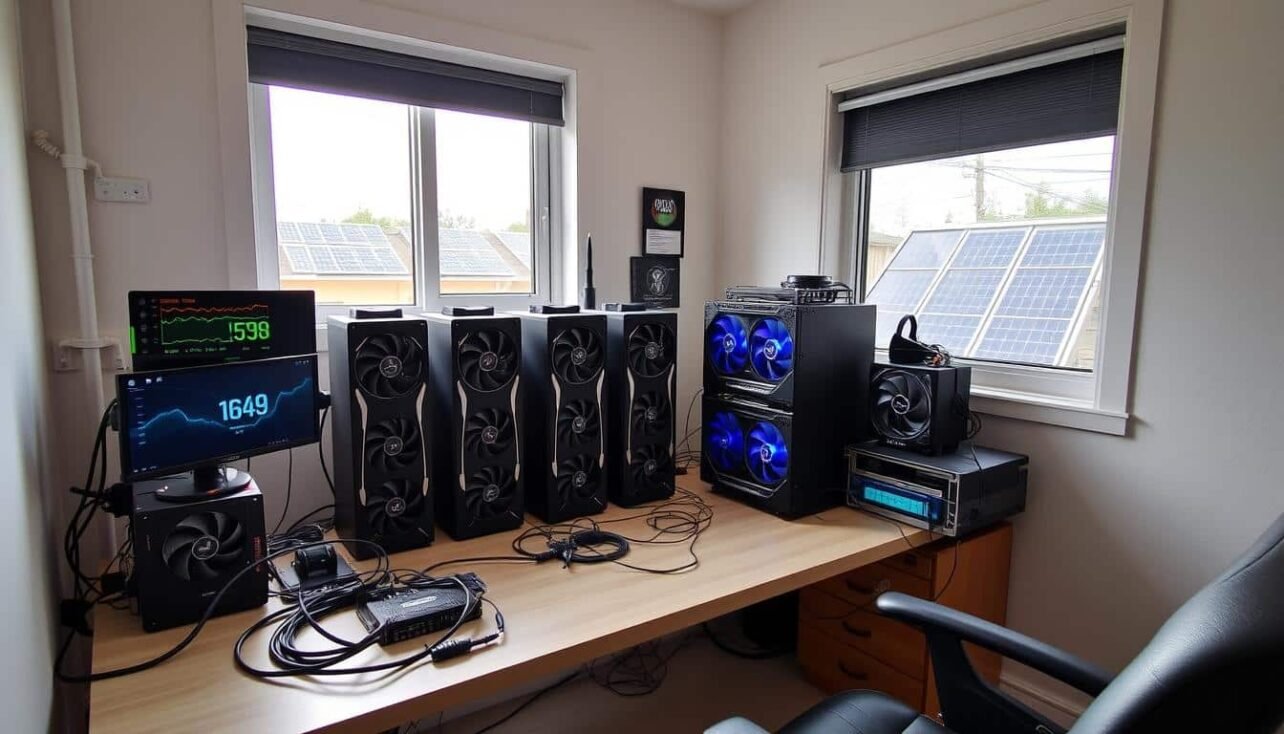
No comments yet